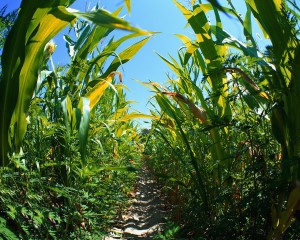Starting from the Industrial Revolution, mankind has depended on fossil fuels to produce power to operate our equipments. Of course, the dangers of utilizing fossil fuels and their finite amounts were found as time went by and afterwards, many have attempted to find ways that either lessened the impact from fossil fuels or extracted fuel from a different source. Fortunately, we were able to find a way through conversion of dead plant tissues from the crops to produce energy. We call this fuel, “biofuel.”
However, as with everything that is too good to be true, there is a catch. According to this article, biofuel production requires a large amount of crop fields as each crops have severely limited range of lights they can absorb, therefore providing small amounts of fuel. This is because plants have evolved to make sufficient amount of energy from light just to survive and not to be our fuel storage. Not only that, biofuel is based on crops that we also grow to sustain ourselves. In short, if we are to use it to power our machines and transportation, we must be prepared to eat less.
As luck would have it, Per Morgen and his colleagues from University of Baghdad and Al-Muthanna University in Iraq found a new, cheap method that still uses biofuel but keeps all the advantages while eliminating all negative aspects.
Their method does not use crops in their entirety. Rather, they use the parts of crops that we cannot eat. That’s right, the starting material used for this method is cellulose.
What is cellulose? It is a main component of plants made of sugar chains. In order to digest it, one would require an enzyme called cellulase that helps break it down into smaller pieces, which we do not have.

Moving on, they plan to convert cellulose into sugar and then convert the sugar into fuel with the help of an acid they extracted from treated rice husks to help move the process forward. The husks are generated in large bulk from global rice productions, therefore being cheap and easy to find.
Since this technique uses cellulose, there is no need to worry about cutting down food for fuels as we are using inedible, unusable portion of crops to make fuel while using digestible parts for food. Also, there is no need to cultivate separate fields of crops or worry about inefficiency of photosynthesis since cellulose can be extracted from crops we already have for food production and is found in large amount. Therefore, it is much more efficient and cheap than normal usage of biofuel and the output is high enough to replace fossil fuels.
The time when fossil fuels can no longer be used due to depletion will come and when it does, we will be ready.
-Harry Seo





